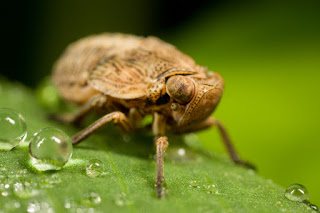Tuesday 11 April 2017
The process of this drawing was very tedious. The first step was to brainstorm compositions and figure out what area of the display you were going to draw. After you had decided, on your rough copy, you had to block in the rough idea of the shadows. Once that was finished you got you're big paper and had to do a contour sketch of all the details in your two objects. After that step you had to block in all of your shadows or shifts in light and then you could move on to filling your blocked in shadows with your lightest shade. Once your lightest shadows were in place you could go in with your second lightest shade until you got to your darkest (about 4-5 shades total) and then you were done.
The composition i chose for my drawing was the diagonal composition. you can tell this because my objects are placed in the bottom left corner and flow upward towards the top right corner. The point of this is do have the eye look for the bottom left to the top right. The vase on the top left corner helps balance out the heaviness and helps make the bottom right corner less empty.
Thursday 6 April 2017
Self Portrait Analysis
Photorealism Self Portrait
1. The art style i chose of this assignment was Photorealism.The purpose of this style us to use invisible paint strokes to create the look of an actual photograph.
2. In order to achieve the look of Photorealism, i used the same colour skin tone and used a blending tool to create the smooth look of a photograph.
2. In order to achieve the look of Photorealism, i used the same colour skin tone and used a blending tool to create the smooth look of a photograph.
3. First what i did was i made a layer over top of the original photograph and outlined distinguished features with a dark brown colour. Then, i painted over different features on multiple different layers to make it easy to edit and manipulate each one to my liking.
4. i do feel that if i had enough time i would have done a better job, but for the time i was given and taking into account how many times i restarted, i am satisfied with the end result.
4. i do feel that if i had enough time i would have done a better job, but for the time i was given and taking into account how many times i restarted, i am satisfied with the end result.
Friday 24 February 2017
Thursday 16 February 2017
Lighting for Photography
Split Lighting
This is an example of Split Lighting. i know this because half of her face is shadow, and the other half is covered with light.
Loop Lighting
This is and example of Loop Lighting. I know this because of the small shadow around her right nostril.
Rembrandt
This is an example of Rembrandt lighting. I know this because of the small triangle of light underneath her left eye.
Tuesday 14 February 2017
Photography
Shallow Depth of Field
These Photos are examples of Shallow depth of field because the focus is on a very close subject and the background is blurred.
Long Depth of Field
These photos are examples of a long depth of field because both of these photos focus on a point off in the distance.
Slow Shutter speed
These photos are examples of a slow shutter-speed. this is because the subject were in motion and because the shutter-speed was so slow, caused the picture to become blurred.
Fast Shutter speed
These photos are examples of a fast shutter-speed. this is because the subject was in motion, but the shutter was so fast it caught the subject in motion.
ISO 100
these photos are examples of pictures taken with ISO 100. you can tell because the environment in both pictures are bright, therefore there is no need for a high ISO. Because of this, the picture looks smooth.
ISO 3200
These are examples of pictures being taken with an ISO of 3200. High ISO is mainly used when taking pictures in the dark. this helps the picture look smooth, and less grainy.
Monday 6 February 2017
Subscribe to:
Posts (Atom)

























